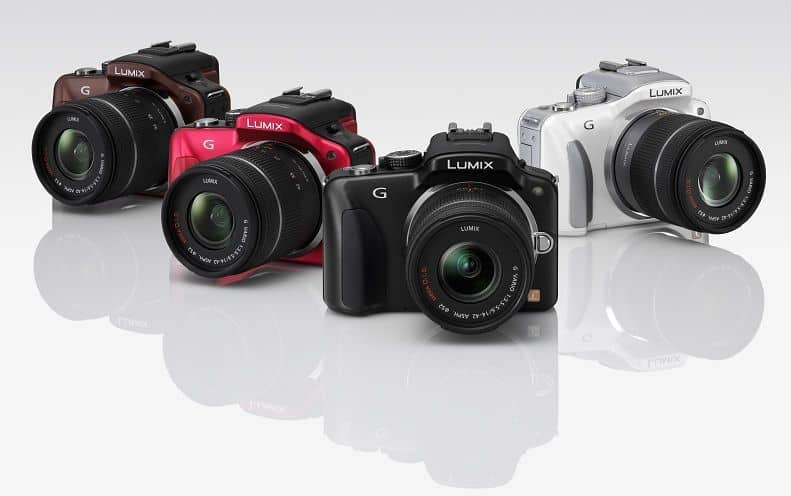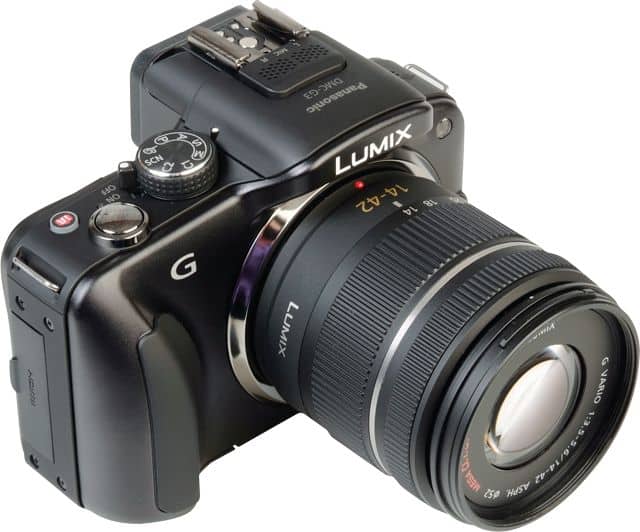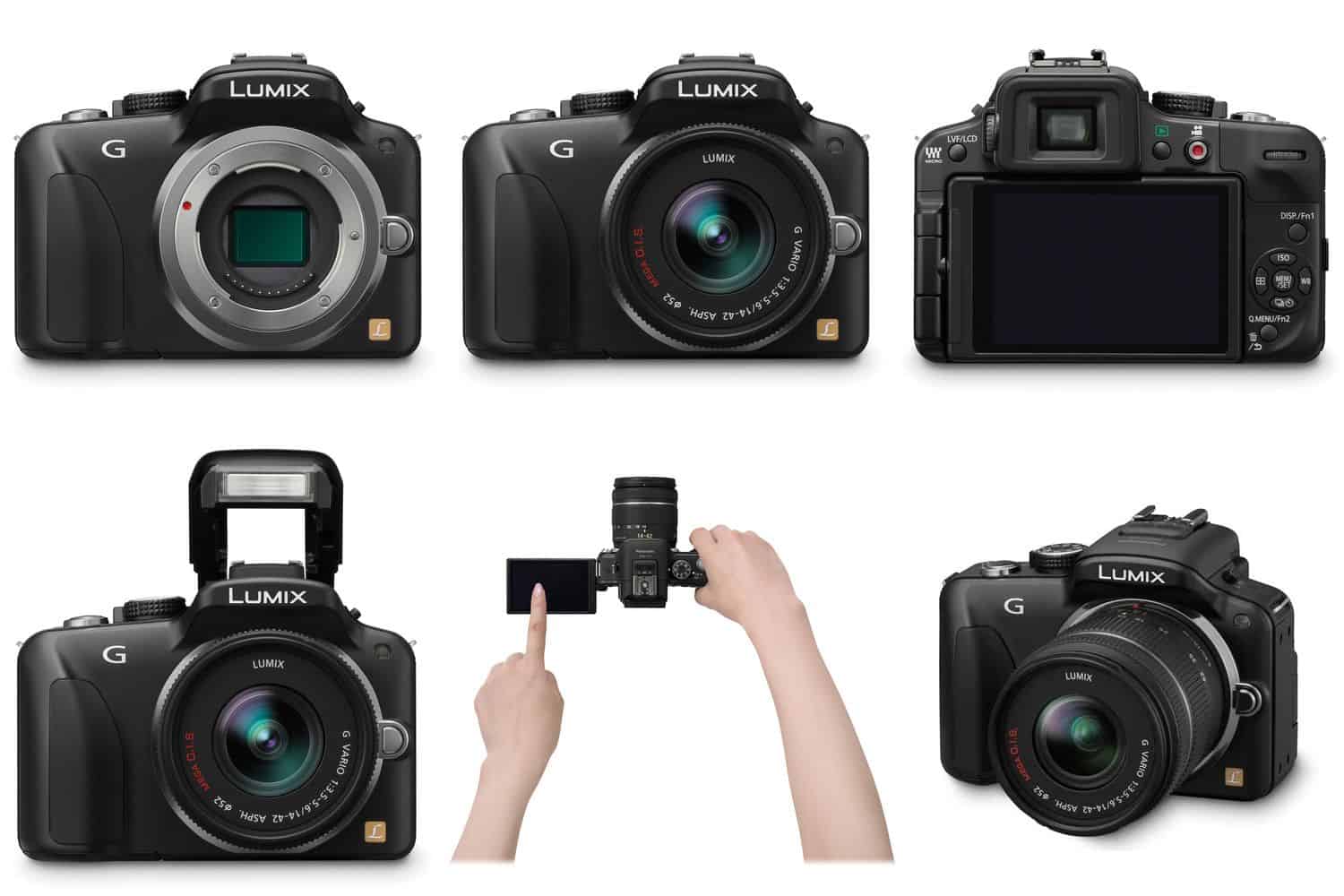Table of Contents
amazon Panasonic Lumix DMC-G3 reviews
Design
In terms of size and form of the G3 similar to the Panasonic GF2 than G2. G3 is currently interchangeable camera lens is the smallest and lightest type of Panasonic. Although called G3, but you will only see a letter G on the front fuselage, ie the official series called Lumix DMC-G.
In addition to the touch screen can be touched to focus maintain DMC-G2 era, Panasonic implemented a series of changes and upgrades in the DMC-G3: shooting AVCHD format in full HD 1080p resolution instead of 720p; type image processor is now the most advanced Venus Engine VI FHD Venus Engine HD II instead; The effective resolution increased from 12 Mp up 15.8mp, for sharper pictures. Touchscreen on the G3 is equipped as easy to understand and easier to use compare to the G2, allowing you to touch any point on the screen to select the AF point, and not just focus on the central part Frames. In addition, the Lumix G3 is equipped with an electronic viewfinder with a high resolution of 1.44 million pixels when panoramic view (800×600 0.7x magnification). Color balance is also improved compared to the Lumix G2.
LightSpeed system with contrast AF, the LUMIX G3 processors at faster predecessor G2 pretty much due speed Live MOS sensor doubled from 60fps (frames / sec) to 120fps. Control mode about manual focus also present at the Lumix G3. At a 4x magnification, the subject on the LCD screen is enlarged in a small window, enabling users to keep the rest of the image as a reference frame. Also at 4x, the small screen will fill the screen to control the level of focus. This feature is applicable both in the Manual Focus mode and AF + MF focus.
However, apart from the “upgrade” above, compared to G2, G3 without a sensor to recognize the eyes (eye sensor) intelligence in the viewfinder, this sensor automatically turns on the viewfinder when you look at it , and will automatically disconnect and turn the viewfinder to the LCD monitor when you look outside the viewfinder. Instead, there is a button G3 LVF / LCD for you to manually switch modes to capture this sight. G3 also no longer ring-focus and select the handles focus mode. You also can not use the external microphone when recording audio needs better, because G3 eliminates external microphone jack on the camera body.
G3 camera body of aluminum coated with rubber coated, not as G2, grip part is narrower, but the reviews are for that holding G3 machine quite sure. Like the G2, G3 screen can rotate 180 degrees and flipping 270 degrees wide viewing angle (free angle), allowing for easy shooting in difficult shooting angles.
G3 shipped under both forms and includes only the camera body, including the lens. Like the G2, G3 uses Micro_Four_Thirds lens systems, supporting a larger lens size and lighter weight without compromising on performance. Also bundled 14-42mm lens, users can optionally replaced with 11 diverse Vario lens, including the lens 3D shooting 2D and 3D simultaneously. Clamped lens also fit the lens Leica M and Leica lens R.
14-42mm lens (equivalent to 28-84mm on a 35mm film) G3 comes with a focal range of 14-45mm kit less than before, clamped plastic lenses rather than metal. The lens is small and lightweight, 20mm pancake tube may surprise you because of its size. However, this lens can be quite wide open when the zoom at maximum size. The only downside is the largest aperture is only f / 3.5-5.6.
Basically, the G3 has realized the idea of a mini DSLR models of Panasonic. Machine with the brown, black, red and white.
Shooting modes
G3 has enough shooting modes that you want from the premium compact DSLRs to low: the automatic mode comes with the manual control mode.
– Intelligent Auto / Intelligent Auto +: Auto shooting mode intelligently, can identify the most ideal setting from 7 shooting options. IA + mode can be selected by users and provides a number of options such as touch screen controls exposure, focus and white balance to background. However, both modes are limited user intervention.
– Creative Control: Auto mode allows image capture such effects has been treated with photo-editing software. These effects include: Retro, High Key, Sepia, High Dynamic. Limited intervention from the user.
– Scene: Supply of 17 automatic shooting modes have been optimized for each shooting different subjects, such as landscape, snow, sunny, night … Restrict user intervention.
– Custom1 / Custom2: Allows users to pre-set shooting modes when the need is satisfied to be able to press the shutter immediately without losing time parameter adjustment.
– Program Auto: The camera will automatically set the aperture and shutter speed, users will optionally also adjust sharpness, contrast and color saturation …
– Aperture Priority: The user manually set the aperture, the camera will adjust shutter speed. Multiple operations for the user.
– Shutter Priority: The user manually set the shutter speed, the camera will adjust the aperture. Multiple operations for the user.
– Manual: The user manually adjust both aperture and shutter speed. Multiple operations for the user.
– Motion Picture: AVCHD Video capture resolution 1920 x 1080 or 1280 x 720 mp, with a speed of 30 frames / sec; MPEG video recording at a resolution of 1280 x 720, 640 x 480 or 320 x 240 at 30 frames / sec. AVCHD video clip length of up to 13 hours, 3 minutes, 20 seconds; if it will burn MPEG format can record clips 2GB.
To choose the mode, you use wheel adjustment (Mode dial). Video button lets users switch shooting mode / Easy shooting. Lumix G3 also integrates a flash and a hot-shoe socket to mount the flash Lumix.
Performance
16.6MP Live MOS sensor combined with the image processor Venus Engine FHD DMC-G3 advanced help bring the photos and video clips of high quality and significant noise reduction (approximately 66%), color balance more natural, without any effect on the quality of the image. When shooting at high ISO values S / N is improved by 200% compared with 12.1MP sensor on G2.
Shutter speed of the Lumix G3 rapidly and vary depending on the settings for image resolution. In the full 16-megapixel setting, continuous shooting Lumix 4 frames / second and 20 frames / second at 4-megapixel resolution.
In addition, the tests showed that, although G3 for sharper shots due to the higher resolution, color depth of the image but not in G2, the size of the image sensor is also smaller G2 (17.3×13. 0mm than 18.0×13.5mm of G2).
G3 displays a focus point at about 0.75 seconds after being turned on, the faster the compact but slower than most DSLRs. You can take the first picture after about 1.25 seconds, better and less compact DSLR. The photographs in turn takes about 1.25 seconds with shutter lag of about 0.01 seconds and press the shutter interval (AF acquisition time) is 0.23 seconds.
Continuous shooting:
Continuous shooting speed is tested on a high-resolution JPEG images on most of the machines and high-speed memory cards most (300x CF, SDHC, …). The number of image frames that are captured by the machine when pressing the shutter button until the camera stops to clear the buffer.
G3 shutter lag of a surprisingly fast, even while pressing the shutter button is better if compared with standard compacts, DSLRs, but only in the lower segments. When continuous shooting at full resolution, faster speed G3 to 0.5 frames / sec compared with Panasonic’s statement.
G3 flash can glow for distance 10.5 m at ISO 160, with a maximum aperture of f / 3.5 at wide angle and f / 5.6 when shooting distant corner. Time to regain signal lights between 2.75 – 6 seconds.
Experiment with different ISO:
Panasonic Lumix DMC-G3 for no noise images at ISO 100-800, noise starts to appear at ISO 1600. At ISO 3200, images began to see quite clearly noise and loss of detail, the ISO 6400 then even more noise, though images can still be used. Compared with G2, G3 achieves better noise reduction at high ISO, but still inferior to the D7000 DSLR or 60D.
Shooting night:
DMC-G3 has a maximum shutter speed of 60 seconds, and have the option of shooting under light bulb with the exposure time of up to four minutes, very good if you like Foliage. The photo below taken at 15 sec and ISO 160. Image quality is proven at 100% crop images. Machine took adding a period equivalent to the reduction of noise, so at a speed of 15 seconds in this example, the actual exposure time machine should be 30 seconds.
Resolution mode Smart (Inteligent Resolution):
Intelligent Resolution feature of the DMC-G3 will recognize the contours, soften the image area and optimize the pixels in that area while reducing image noise for smoother. This mode has 3 levels: low, standard and high, and an extended expansion mode.
Inteligent Dynamic Range mode:
G3 features intelligent light-sensitive frequency range (IDR – intelligent dynamic range) to extend the frequency range of sensitivity, for brighter images in low-light shooting angles.
where can you get a Panasonic Lumix DMC-G3 online
Panasonic LUMIX DMC-G3 16 MP Micro Four-Thirds Interchangeable Lens Camera with 3-Inch Free-Angle Touch-Screen LCD and 14-42mm Lumix G VARIO f/3.5-5.6 Lens: Buy it now
Panasonic LUMIX DMC-G3 16 MP Micro Four-Thirds Interchangeable Lens Camera with 3-Inch Touch Screen LCD (Body Only): Buy it now
Panasonic LUMIX DMC-G3 16 MP Micro Four-Thirds Interchangeable Lens Camera with 3-Inch Free-Angle Touch-Screen LCD and 14-42mm Lumix G VARIO f/3.5-5.6 Lens: Buy it now
Conclude
Small size and lower weight G2 predecessor model, the DMC-G3 for stills and video quality is very good. But the machine has battery life is not high, the price is still competitive with the low-level DSLR cameras (entry-level). The lack of external microphone jack is also a minus point for those who focus video recording capability.
Advantage:
+ Small and much lighter than DSLRs
+ Removable lens changes
+ Images quality is very good
+ Video quality is very good
+ Time to focus and shutter speed faster
+ Good screen rotate and flip
Disadvantages:
– Battery low
– Flash quality equal compact camera
– It takes time to switch between modes touchscreen and physical buttons
– Performance is roughly DSLRs


